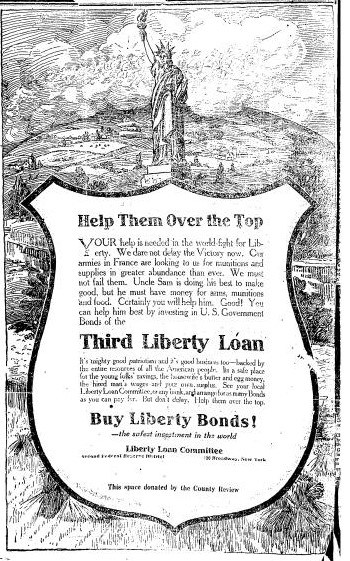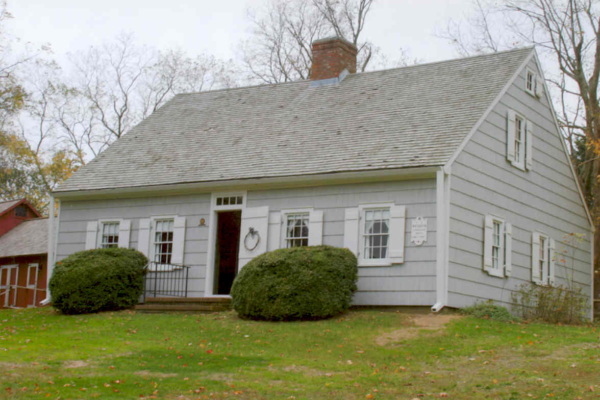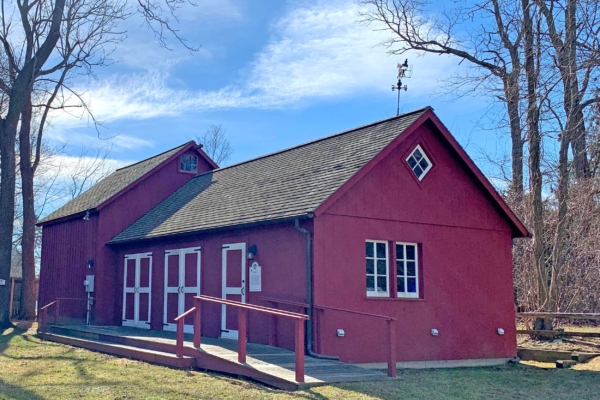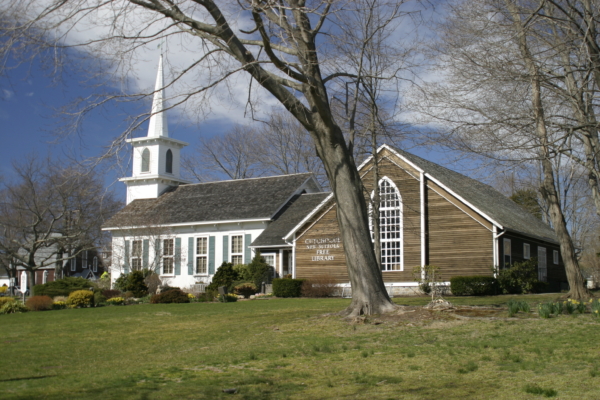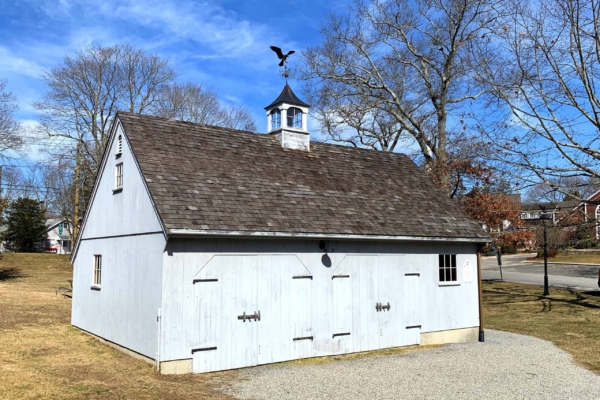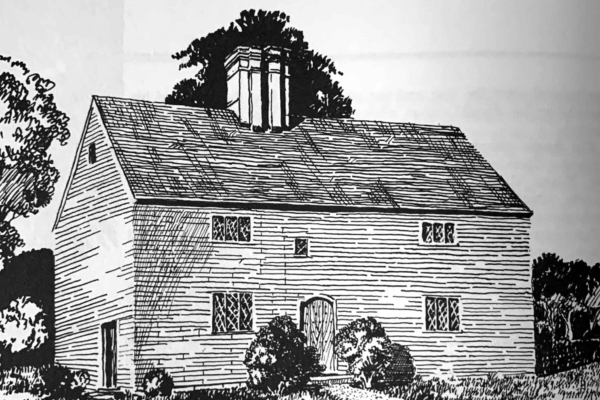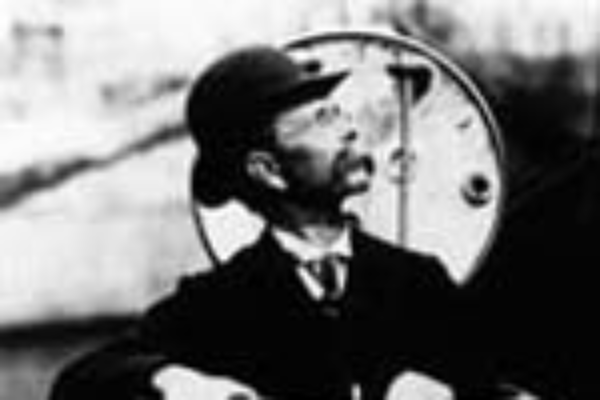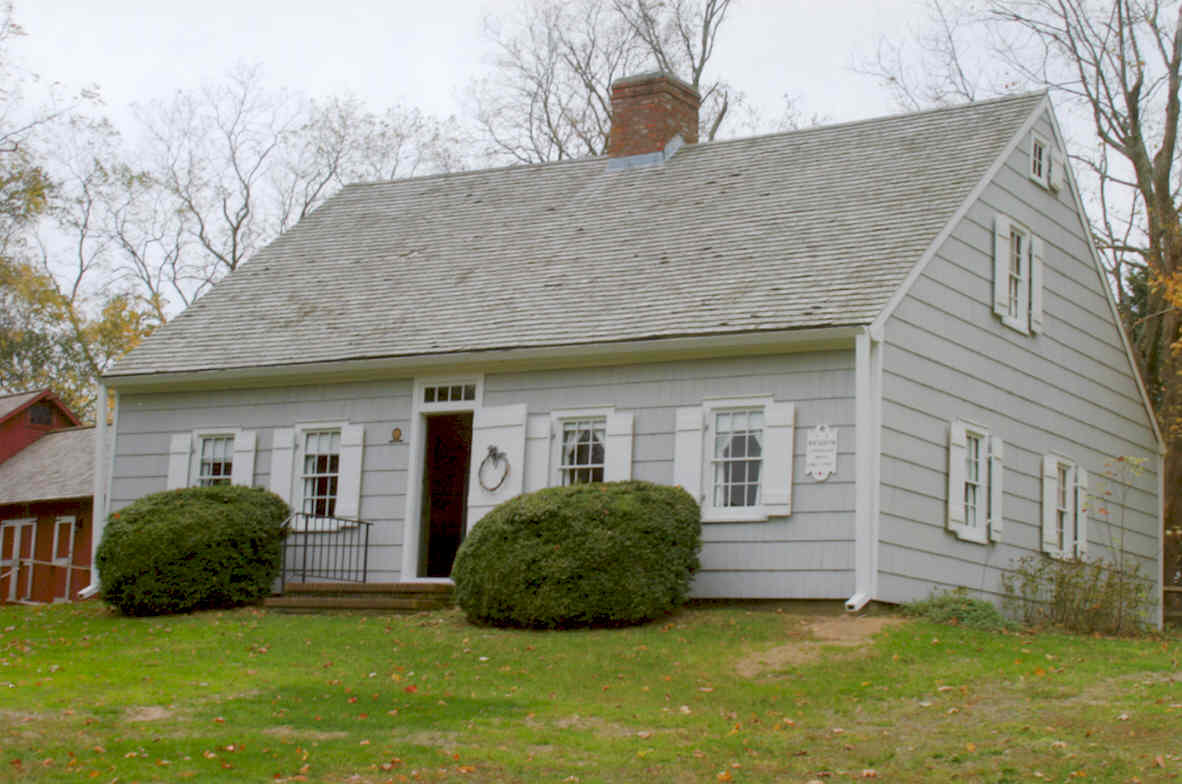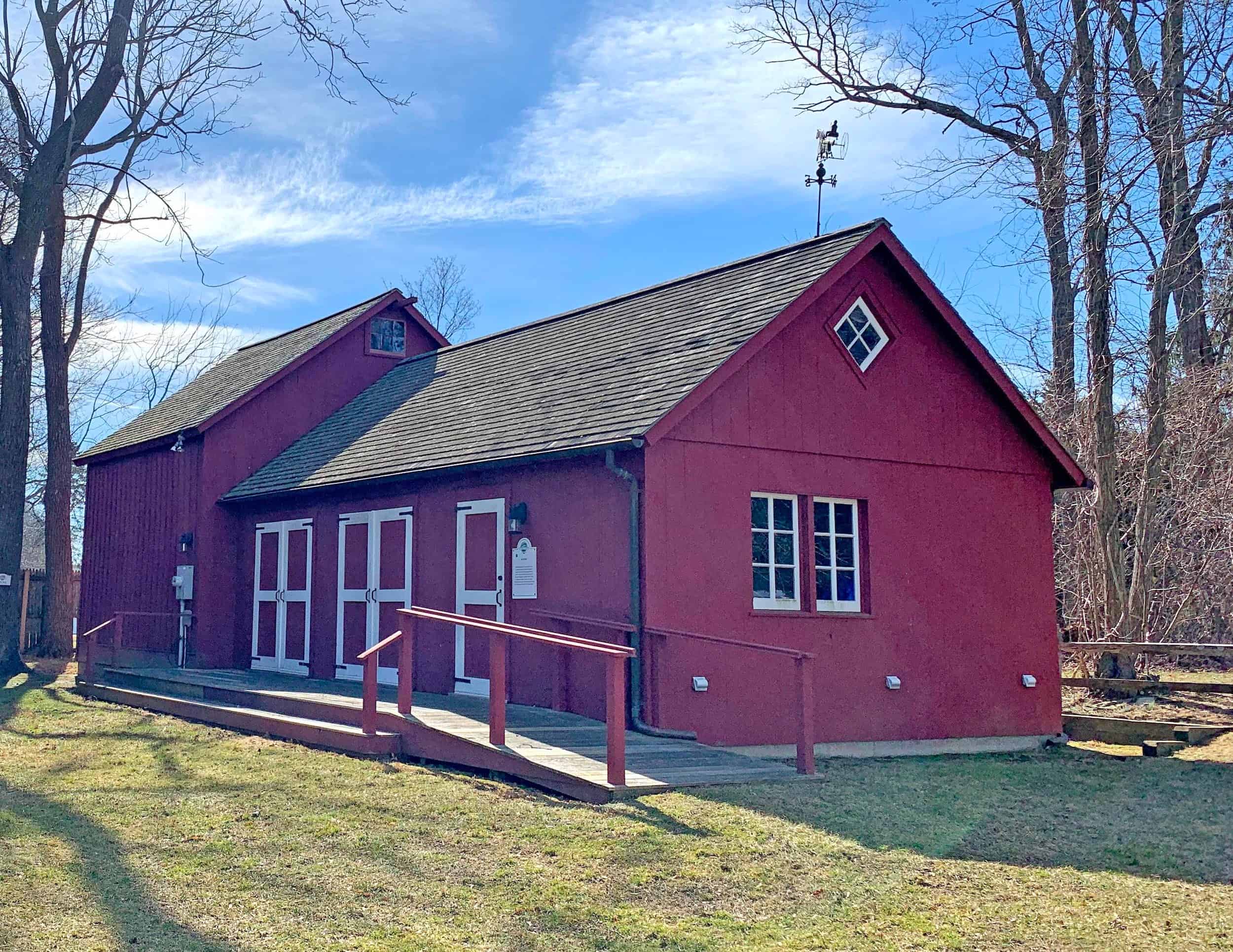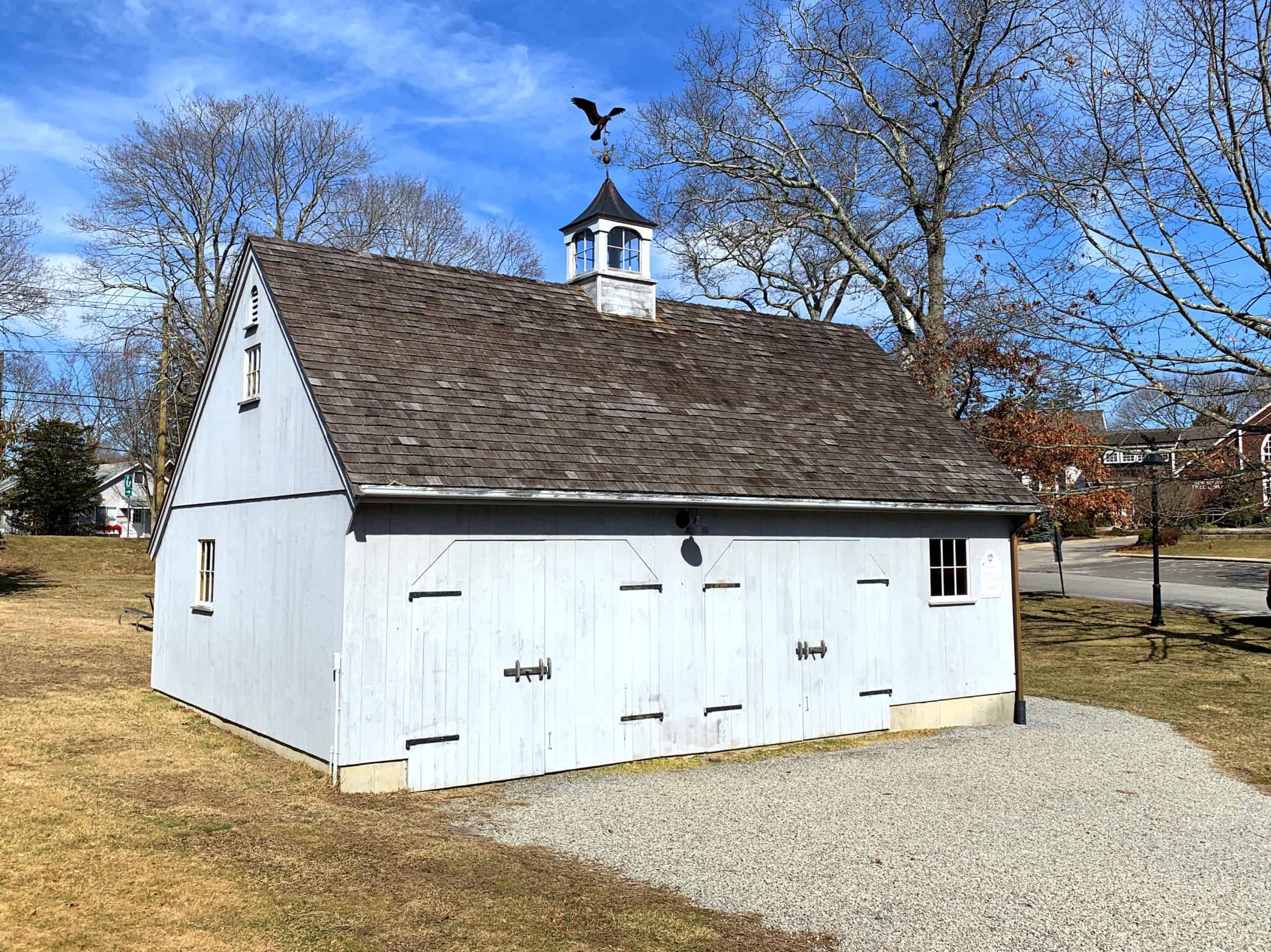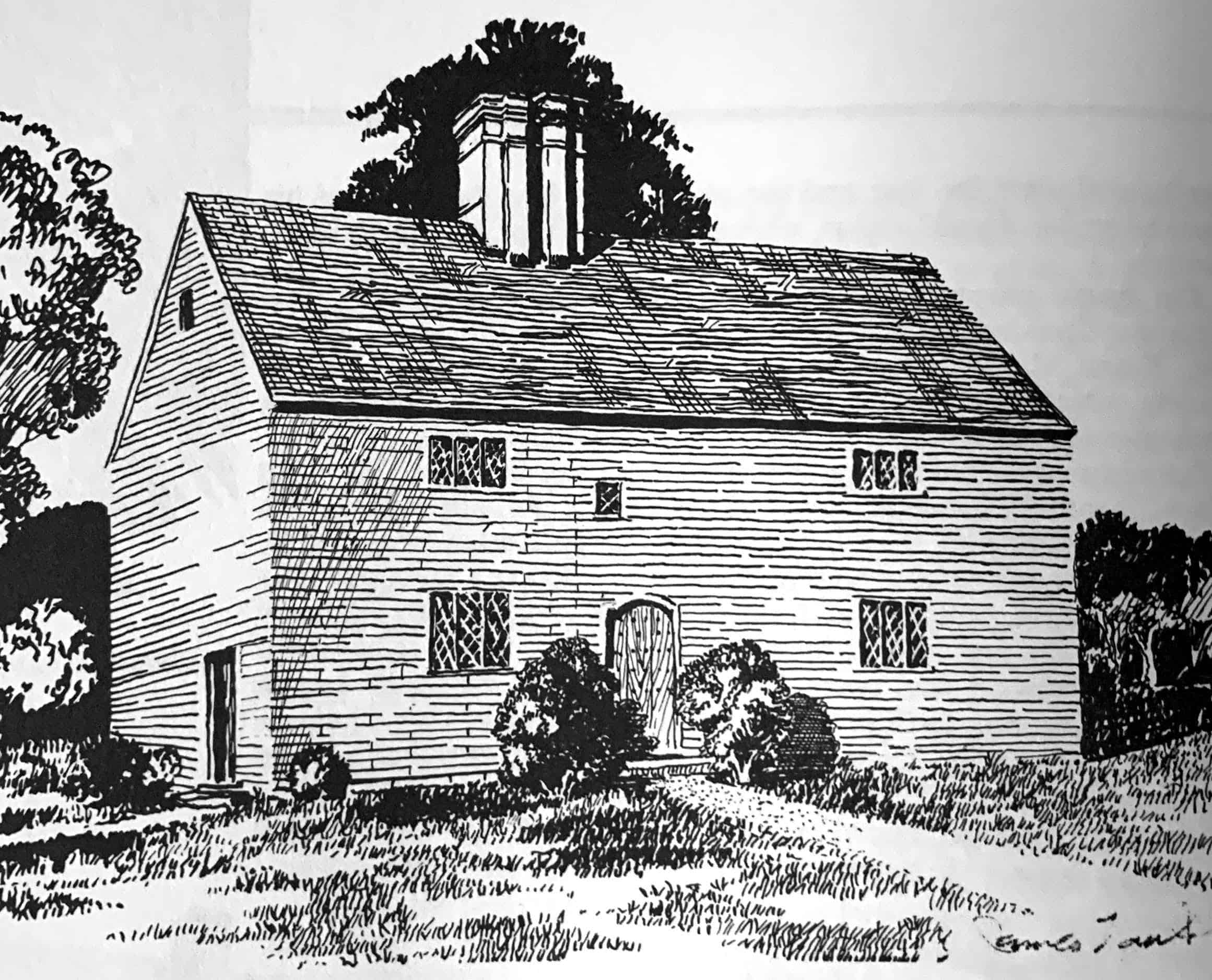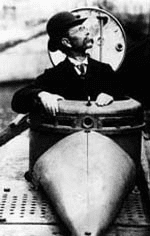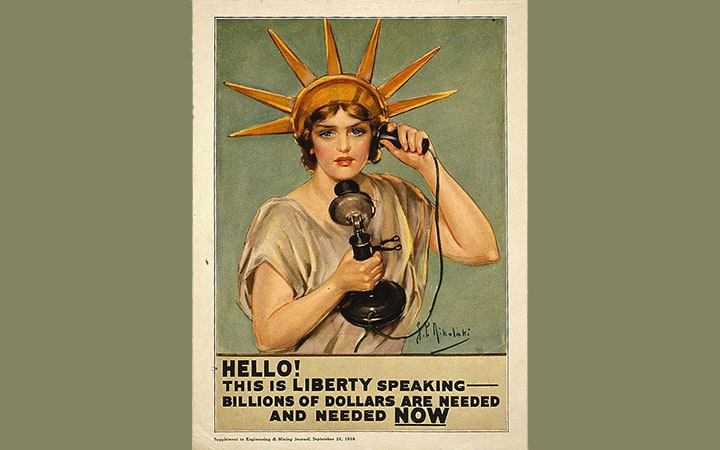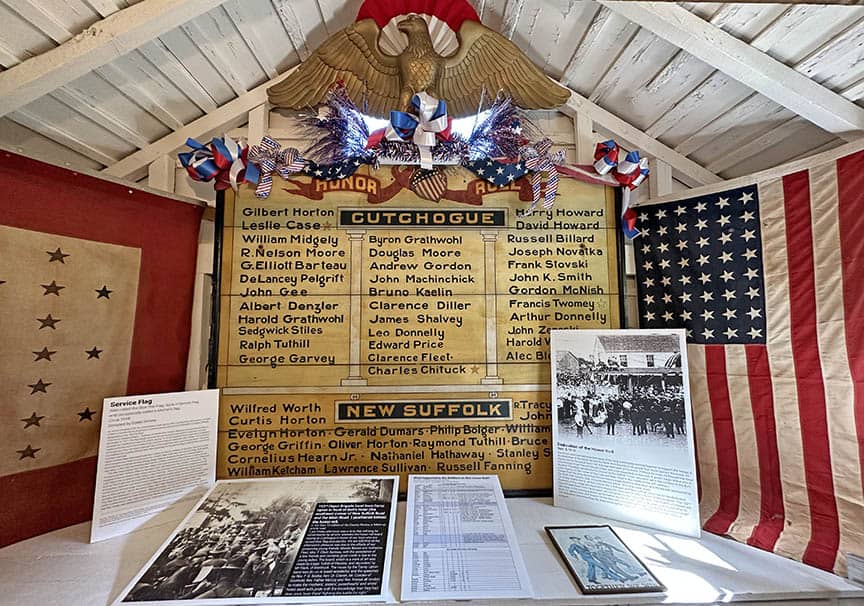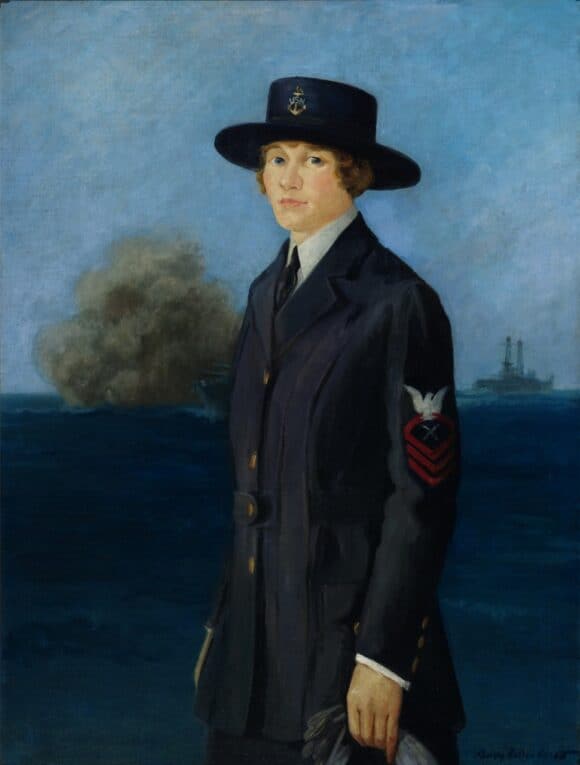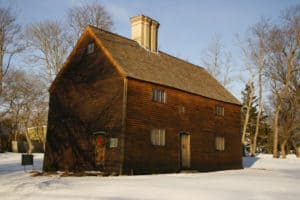Last year, we presented a temporary exhibit entitled “Honoring our WWI Veterans and those they left behind.” For Memorial Day, we will summarize the exhibit in a Five-part blog series for those unable to see it. It presents a fascinating window into how people of the North Fork, particularly those of the Cutchogue and New Suffolk area, honored and supported their veterans of the First World War. In this Blog, we talk about propaganda in the USA.
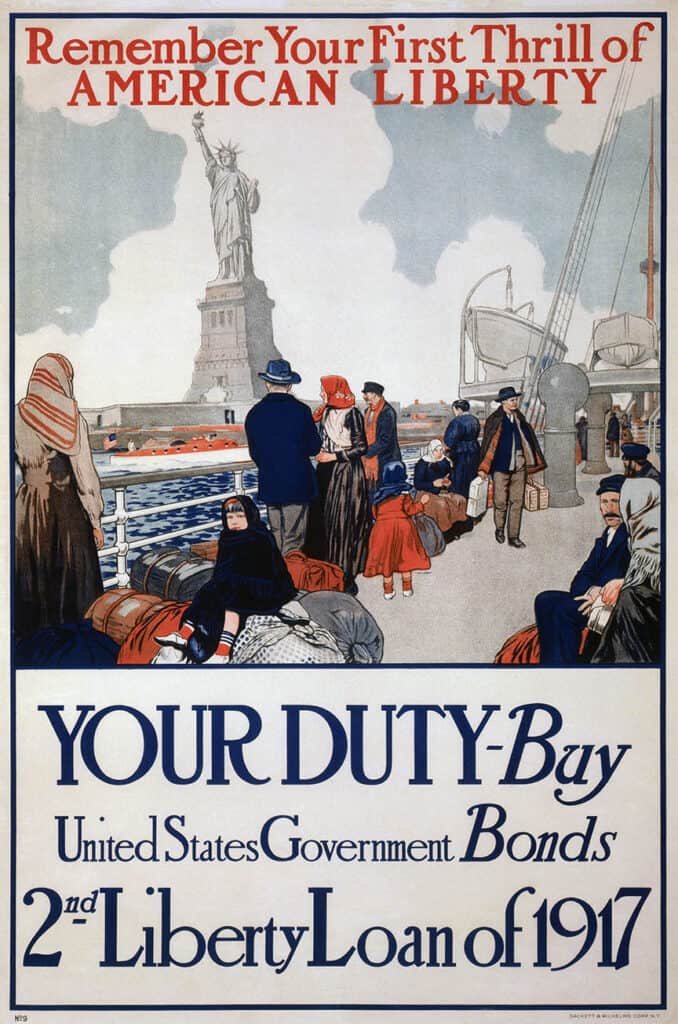
Propaganda has come to have a negative connotation, but it has historically meant information used to promote or publicize a particular political cause or point of view. The negative connotation it has received is that it is often biased or misleading. I’m sure if you were viewing these posters from the other side, that would probably be what you thought, but it was this relatively new form of advertising and promotion that helped us win the war. It helped our government focus the citizens on what was needed to lead us to victory: enlistment, purchase of liberty bonds, conservation and production of food, and even things like knitting socks and rolling bandages.
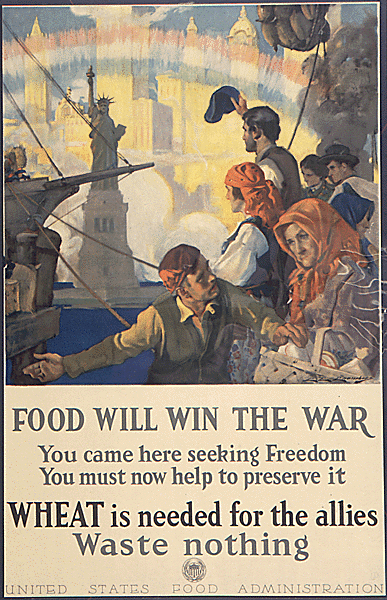
Support Posters
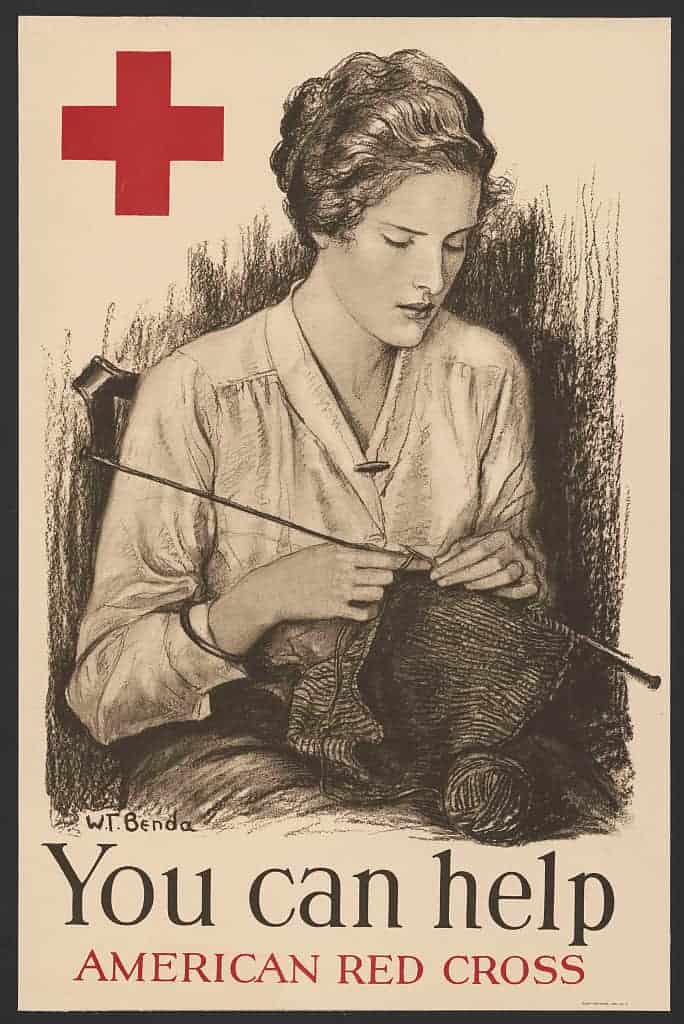
Many posters were produced during this period, some sponsored by the Red Cross, promoting all the different ways those who stayed behind could help support the troops, many of them difficult for the modern person to imagine. They encouraged knitting Socks, sweaters, and scarves for the soldiers, being frugal, and saving food. Although not promoted in posters, rolling bandages were encouraged as a pastime for women and even older children.

In March 1917, Charles Lathrop Pack organized the US National War Garden Commission and launched the War Garden campaign. Food production had fallen dramatically during World War I. The campaign promoted the cultivation of available private and public lands, resulting in over five million gardens in the US and foodstuff production exceeding $1.2 billion by the war’s end. These gardens were known collectively as “Victory Gardens,”
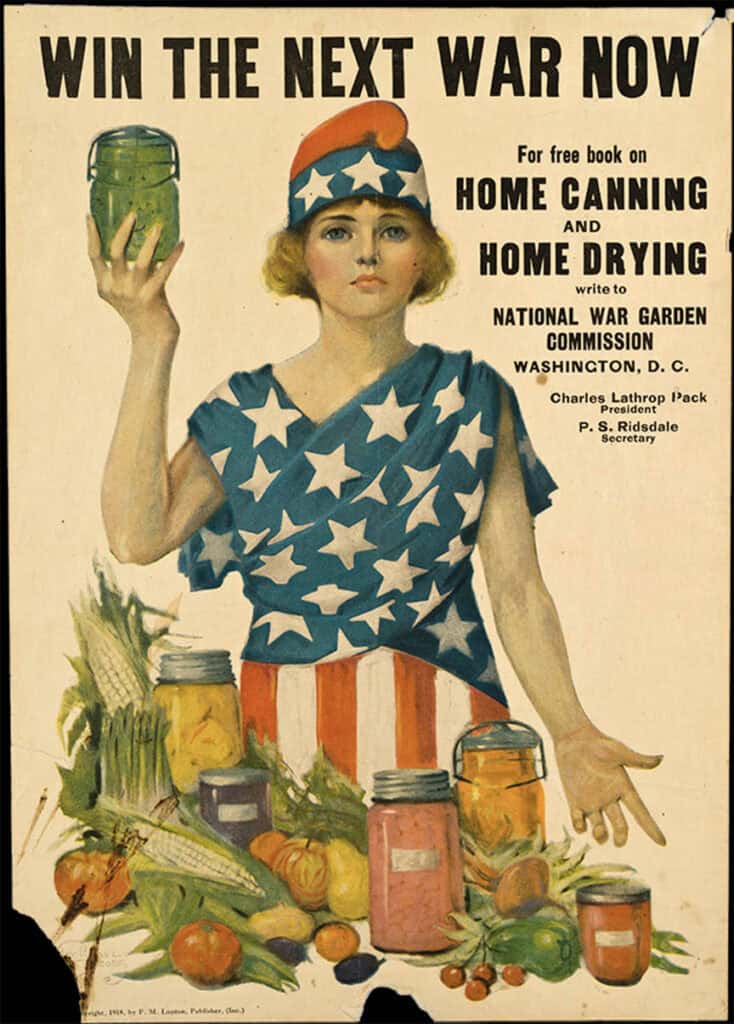
President Woodrow Wilson said, “Food will win the war.” To support the home garden effort, a United States School Garden Army was launched through the Bureau of Education and funded by the War Department at Wilson’s direction.
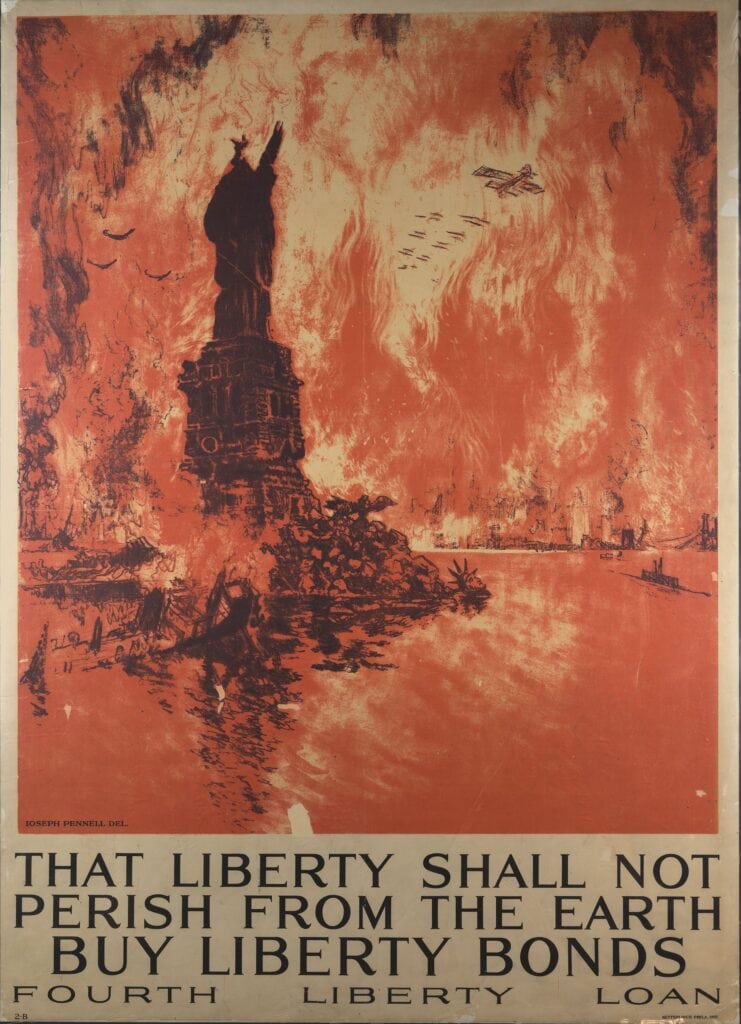
Liberty Bonds
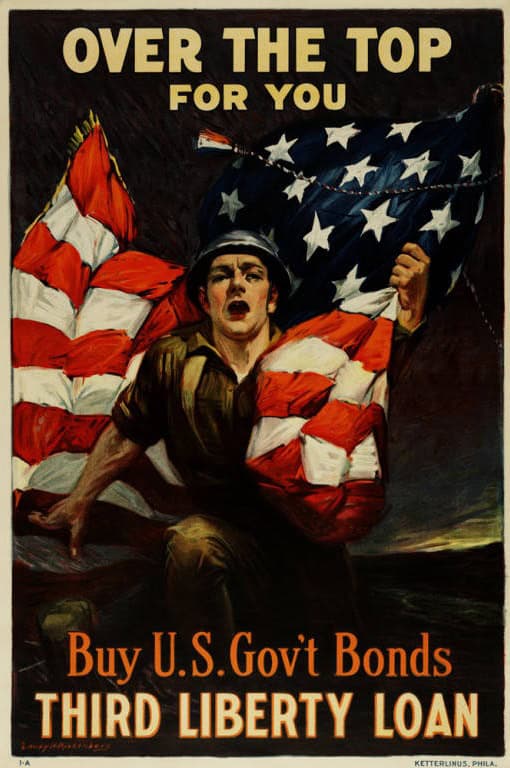
Liberty Bonds were war bonds created and sold by the U.S. government during World War I to help fund the American war effort. They were a way for Americans to support the war, especially if they could not take part in combat. The bonds were issued five times between 1917 and 1919. Subscribing to the bonds became a symbol of patriotic duty in the United States and introduced the idea of financial securities to many citizens for the first time.
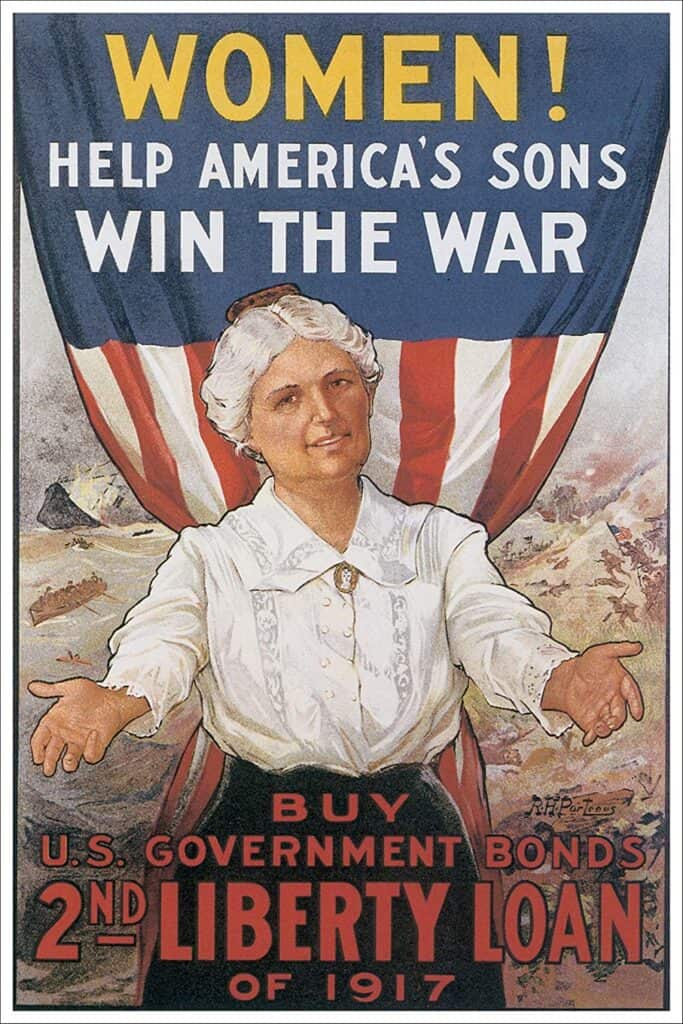
Ads for Liberty Bonds filled local papers, and dramatic propaganda posters promoted them. Regional events were even created to encourage everyone to invest in the war effort.
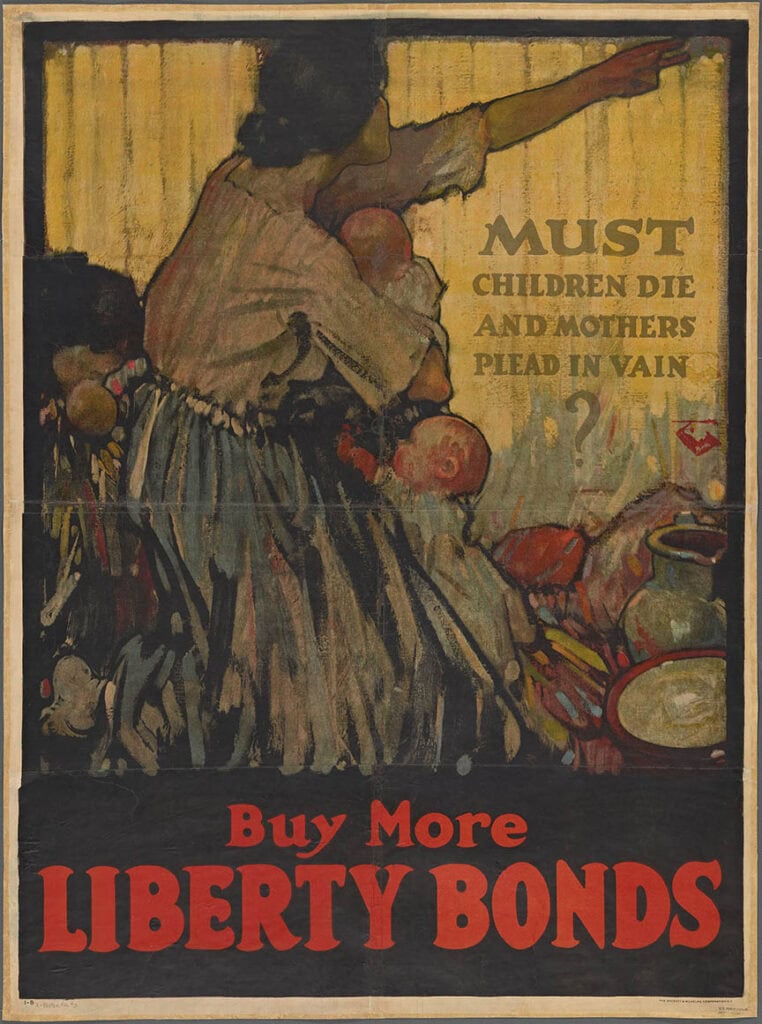
Up next is our final installment: Part V- Honoring our WWI Veterans and those they left behind: The WWI Honor Role and its Unveiling.
